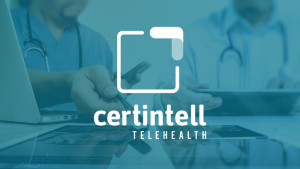Shortcuts: See the RTM Codes | Review the Study Data
Ever since the COVID-19 pandemic, many health care workers faced challenges providing thorough patient care, while limiting possible patient exposure to the coronavirus. This led to clinicians using Remote Patient Monitoring (RPM) more frequently, in a variety of ways, as they were able to provide patients care from the safety of their homes. Now, more providers are getting a chance to do so, after the announcement of RPM expansion into Remote Therapeutic Monitoring (RTM). RTM is designed for physical and occupational therapists to collect non-physiological data and measure medication adherence.
The extended use of an internet-based form of healthcare brought to light various complications around the practice that prevent patients from receiving care through RPM, such as accessibility and coverage issues. While there are still policy-driven opportunities in the RPM care approach that need to be met, progress is being made. In this article, explore the impact RPM has had on patient lives, as well as how RTM can help satisfy additional patient and provider needs that came to light in the past several years.
What RTM Means for Additional Patient and Provider Needs
The Centers for Medicare and Medicaid Services (CMS) revealed five new CPT codes for RTM in the 2022 proposed Medicare Physician Fee Schedule. These RTM codes fill important gaps often seen in RPM coverage. RTM covers the monitoring of non-physiologic data such as pain and medication adherence which is not currently included in RPM billing. This data has always been important when monitoring a patient’s health, however, without being previously covered by CMS, providers consequently spent less time collecting that data. RTM also covers the monitoring of self-reported data. With current RPM codes, data must be automatically transmitted by a connected device. With the 2022 codes, patients can discuss their adherence levels, which isn’t a metric that is always possible to be transmitted. As a result, these codes present new opportunities to provide whole-person care. The nature of the codes allow more opportunities for patient-provider communication, a crucial aspect of value-based care.
These codes also open more doors for providers as RTM is intended to be ordered and billed by a broader range of providers, including physical therapists, occupational therapists, speech language pathologists, clinical psychologists, and other practitioners than those previously permitted to bill RPM. CMS specifically states that “the new RTM coding was created to allow practitioners who cannot bill RPM codes to furnish and bill for services that look similar to those of RPM”.¹ This allows a broader range of providers to be compensated for the work they are doing for the patients, and allows patients the possibility to stay more connected when and where it matters. The new codes introduced are as follows.¹
CPT code 989X4
Remote therapeutic monitoring treatment management services, physician/other qualified health care professional time in a calendar month requiring at least one interactive communication with the patient/caregiver during the calendar month; first 20 minutes
CPT code 989X5
Remote therapeutic monitoring treatment management services, physician/other qualified health care professional time in a calendar month requiring at least one interactive communication with the patient/caregiver during the calendar month; each additional 20 minutes (List separately in addition to code for primary procedure)
CPT code 989X1
Remote therapeutic monitoring (e.g., respiratory system status, musculoskeletal system status, therapy adherence, therapy response); initial set-up and patient education on use of equipment
CPT code 989X2
Remote therapeutic monitoring (e.g., respiratory system status, musculoskeletal system status, therapy adherence, therapy response); device(s) supply with scheduled (e.g., daily) recording(s) and/or programmed alert(s) transmission to monitor respiratory system, each 30 days
CPT code 989X3
Remote therapeutic monitoring (e.g., respiratory system status, musculoskeletal system status, therapy adherence, therapy response); device(s) supply with scheduled (e.g., daily) recording(s) and/or programmed alert(s) transmission to monitor musculoskeletal system, each 30 days
Thanks to the increased use of RPM, RTM was allowed to come to fruition. Since these RTM codes were finalized, more episodes of quality care for patients and improved billing/compensation for providers will become the standard, rather than just case studies.
Retrospective: COVID-19 Showed That Patients, Not Just Providers, Are Ready for Remote Monitoring
Before the COVID-19 pandemic hit in the spring of 2020, RPM was mostly used for the management of chronic health conditions. In a typical RPM workflow, patient data is collected through the use of automated technology, which can then be used to deliver direct patient care. During the pandemic, providers discovered that they could use RPM to monitor signs and symptoms of various diseases that fall beyond the commonly addressed conditions, such as hypertension or behavioral health.
A cohort study that was conducted in Italy reflects this adaptability of RPM. Fifty-four patients who had been diagnosed with non-demented Parkinson’s Disease (PD) were introduced to RPM in an effort to manage their symptoms. The patients were provided with a smartphone application that was capable of providing indicators of gait, tapping, tremor, memory and executive functioning. Questionnaires, which explored non-motor symptoms and quality of life, were also provided. When determining the feasibility of using RPM to manage PD, researchers saw that:
- 83.3 percent of patients ran the app at least once during the course of the study
- 53.7 ran the app at least once a week – making them half compliant
- 29.6 percent ran the app at least twice a week – making them fully compliant
The majority of the patients in this study saw the program through and were satisfied by the RPM format. This pilot study then suggests that available technologies can be readily implemented with the current population’s technical and intellectual resources.²
In addition to the expansion of what can be measured, RPM continues to evolve to give patients increased access to their providers for any additional concerns. During the pandemic, this was the case for patients who thought they might be experiencing signs and symptoms of COVID-19. In a study of GetWell Loop, a COVID-19 specific remote patient monitoring solution, patients were provided with educational materials and the opportunity to share concerns they had with healthcare professionals, who would then be able to answer their questions. Any alert from a patient was resolved through a virtual care workforce of providers and medical students.
Between March 18 and April 20 of 2020, 2255 patients enrolled which produced over 2303 alerts, 4613 messages, 13 hospital admissions, and 91 emergency room visits. Patient respondents were provided a satisfaction survey and 74 percent stated they would be extremely likely to recommend the doctors who delivered their remote care.³
As demonstrated by the two studies highlighted above, RPM is the future of value-based care. As comfortability on both patient and provider fronts increase, the industry can expect more demand for home-based care. The health care sector can also expect more innovation in this area, as exemplified by RTM’s precedent. RPM and RTM will hopefully continue to grow in the spotlight and gain deserved coverage by insurance companies. These services present unique opportunities to meet patients where they are and usher in a new era of care. To prepare for this shift, providers can use the adaptable technology at their disposal and begin to map out long-term and scalable care management programs.
How We Can Help:
Certintell can set you up for success in RPM, RTM and care management services alike. We can supply a suite of RPM devices, including a weight scale, a blood pressure cuff and a glucometer directly to patients at no-cost to them. We’ll educate on device use, which connects automatically to our fully integrated telehealth platform. This allows you to focus more on building relationships with your patients and less on administrative burdens. The telehealth platform is equipped with audio and video capabilities for visits, as well as messaging portals for when data prompts additional conversation. Our certified clinical health coaches also help deliver care to patients, using their data to drive and promote behavior change. Schedule a demo to learn how starting a program so transformational can be so easy.
SOURCES
¹ Nixon C and O’Connor K. New Remote Therapeutic Monitoring CPT Codes Introduced in Proposed 2022 Medicare Physician Fee Schedule. Nixon Gwilt Law. 14 July 2021. https://nixongwiltlaw.com/nlg-blog/2021/7/14/new-remote-therapeutic-monitoring-cpt-codes-introduced-in-proposed-2022-medicare-physician-fee-schedule
² Motolese F, Magliozzi A, Puttini F, et al. “Parkinson’s Disease Remote Patient Monitoring During the COVID-19 Lockdown.” Frontiers in Neurology. 7 October 2020. https://www.frontiersin.org/articles/10.3389/fneur.2020.567413/full?utm_source=researcher_app&utm_medium=referral&utm_campaign=RESR_MRKT_Researcher_inbound
³ Annis T, Pleasants S, Hultman G, et al. “Rapid Implementation of a COVID-19 Remote Patient Monitoring Program.” Journal of the American Medical Informatics Association. 27 (8) pgs 1326-1330. 27 July 2020. https://academic.oup.com/jamia/article/27/8/1326/5835871?login=true
RELATED ARTICLES



